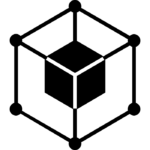
Every project begins with an idea. With this idea you need a plan to reach an end, usually this is launching your product to market. This stage transfers an idea into a project. During this launch, it is very important to record as much information as possible. This is when product design requirements are recorded and tracked, defining the product’s purpose, including its features, functionalities and behaviour.
To learn how to generate ideas before this stage, please refer to the following blog article, “How To Generate Product Ideas And Polish Them“.

Once the product vision is identified and defined, product research provides one of the most important parts in the foundation of a great design. Solid research informs your product, minimizes risk, streamlines project development and sets a trajectory for the evolution and commercialization of the end product. The fact that research comes early in the design process will save you a lot of resources (time and money) down the road because fewer adjustments will need to be made. Typically, this stage will help define the product design requirements.
Research can be focused on many different aspects: the competitive landscape of products, target market, projected annual volumes, key stakeholders, demographics, ergonomic considerations, physical dimensions, outer envelope, brand building or brand alignment, user experience, user interface, internal components, OEM parts, manufacturing processes, manufacturing suppliers, assembly, packaging, sales, marketing, distribution channels and more. Every project has unique research considerations. The key is determining these early in the process and to collect as much usable information as possible to ensure the success of the project. All information is recorded in one central location for easy review and analysis.
For more information on research in product development, please refer to the blog article, “9 Aspects Of Product Design Where Research Matters“.

This is where the magic happens, when we develop visual concepts of the project — and it’s also the most satisfying stage in the design process. The Conceptualize stage is further broken down into specific design phases:
Phase 1 – Early Concept Generation
We typically propose a minimum of three concept directions in a 2D digital presentation for client review. We may also build some sketch models to validate sizes, ergonomics, user experience, user interface and many other important aspects that influence the design. Early concept generation ends with an approval of concept direction from our client to further refine.
Phase 2 – Concept Refinement
Following the approved concept direction, we further refine the architecture. Part separations, manufacturing process and materials are established. High-level design for manufacturing considerations are implemented into geometry so that parts will not have to be re-drawn in later stages. At the end of this phase, we will have a 3D model that has enough features and detail for prototyping. Internal details are usually not implemented at this stage.
Phase 3 – Alpha Prototype
Once we have approval from Phase 2, we will prototype the design in full scale. There are many different methods we use for prototyping. Depending on the project, we will suggest the most appropriate technology that aligns with your budget and current project goals. Once the prototype has been approved, the project will shift to the next stage.
To gain a deeper understanding of Alpha prototyping, please refer to this blog article.

This is where the magic turns into reality. We take the approved conceptual design and break it into manufacturable parts and assemblies. Many considerations are taken into account. Annual volumes, budget, timelines, technology, production strategy, assembly strategy, business strategy, etc. Each part or assembly of parts is designed towards a particular manufacturing process. All internal and external details are incorporated. Mounting points, structural ribbing, panel overlaps, colour, material, finish, gaskets, vents, hardware, electronics, chassis and any other aesthetic, mechanical or physical requirements that the project may have.
Typically there is at least one round of prototyping (beta) before the design can be approved. During this phase it is highly recommended to start preliminary testing prototypes against physical and mechanical design requirements.
To gain a deeper understanding of Beta prototyping, please refer to this blog article.

The Design is complete, all Design Requirements are tested, validated, verified and documented in the DMR – Device Master Record. If any of these tests fail, the design will be adjusted to ensure a pass.The design will be transferred to production once V&V is complete.

We have a large network of production manufacturing suppliers that we are able to partner with to complete your project. We are also happy to work with your suppliers, whatever is best for your project. In this stage we do the final DFM – Design For Manufacturing with each production supplier to ensure all details are implemented best for their production machinery and capabilities. 3D CAD files are sent to each supplier with exact shape and form of all internal and external details. 2D CAD drawings accompany 3D CAD sent with tolerances, dimensions and detailed information about each part of the product.

Your product is designed, engineered, manufactured, assembled, packaged and ready to sell. Let’s take it to market and get it in the hands of the right people.
To gain a deeper understanding of a product launch, please refer to this blog article.